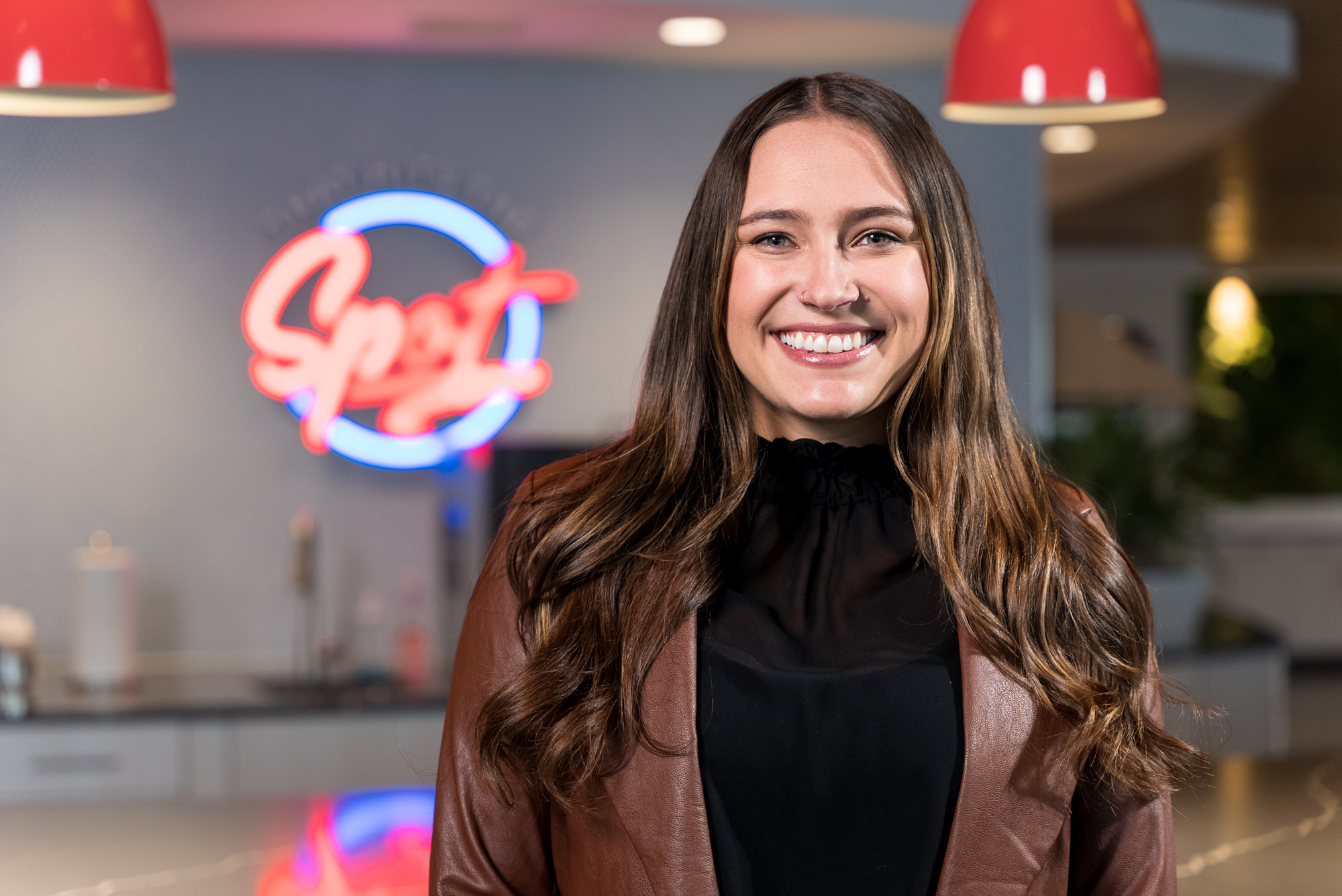Olivia Fuller: Hi, and welcome to Book Club, a Sales Enablement PRO podcast, I’m Olivia Fuller. Sales enablement is a constantly evolving space, and we’re here to help professionals stay up to date on the latest trends and best practices so they can be more effective in their jobs.
In today’s business world, customers are inundated with noise, and this means that the risks of pushing generic content loom large, but the power of an innovative content strategy can mean more engaged and trusting customers. In his book, “Content Mapping,” Henry Adaso shares a blueprint for mapping content to the buyer’s journey and I’m so excited to have Henry here with us today to share some of the key insights from his book. With that, Henry I’d love if you could introduce yourself to our audience and tell us a little bit more about your book.
Henry Adaso: Hey Olivia, thanks for having me. I’m Henry Adaso. I’m a storyteller, a recovering journalist, and an accidental marketer. I worked for many years as a journalist early on in my career and it taught me the story craft, which I now bring to my marketing work.
I currently work as the Head of Marketing for CEMEX USA. CEMEX is one of the largest manufacturers of building materials in the world. I oversee all of our marketing activities online and offline, and as you mentioned at the top of the podcast, I recently published a book.
OF: Great. Well, thank you again for making the time to talk to our audience. I’m very excited to dive into some of the concepts that you talk about in your book. One of those, you explain that content really needs to align strategically with the needs of customers throughout their journey. Why is that customer-centric approach so important, especially given the state of the business world that we’re in today?
HA: Sure. The marketplace is so crowded that we don’t have much of a choice, but to adapt. We really have two options. One, we can become the loudest voice in the room, we can yell louder than everybody else, we can publish more content, share more social media posts and send more emails. We’ve all seen that that is not always the best approach.
The other approach, and the other path, is to figure out how to be the most relevant voice in the room. How to find the people that need what we have to offer and be of service to them. When we do that successfully, we have a better chance to engage and resonate with the right audience.
OF: Absolutely. I could not agree more. In the highly virtual environment that many businesses are in today, what are some ways that professionals can gather insights on their customers to deeply understand their needs and preferences?
HA: I think that’s a great question. I think it’s important to decouple two things. One is that sometimes we get into the trap of outsourcing our innovation and product development to customers by asking them what they need. I’m sure if somebody asked me what I needed in the early 2000s I would have said I wanted a way to play more music without having my Walkman or the disc skipped, but I wouldn’t have thought of an iPhone or an iPod. That’s where the innovation piece comes in. We have to simply innovate.
The second thing is yes, we need to listen to the needs of our customers, understand what they need from us so that we can better serve them. I’ll offer two suggestions for people that sell to customers and people that sell to businesses. If you’re selling a consumer base, one of the smartest ways to gather those customer insights is a website called amazon.com. You may have heard of it. If you go into Amazon and type in the name of your competing product, review the reviews, literally filter them and only look at the critical reviews, you’ll learn a lot about what people are looking for. If these are things that you already offer in your product, now you know what to do, you can speak more to those strengths in your marketing. Or you can see it as an opportunity to innovate and to try to meet the demands of those customers.
That’s on the consumer base. On the business side, if you’re selling to a business, chances are that business belongs to some sort of organization, some trade publication, they probably have conferences and especially today they probably have virtual events and they probably have lots and lots of them. If you go to their website, the trade website, and you pull up the agenda from the last conference, that gives you an idea of what people are talking about. What’s pressing for them, what’s urgent and important and timely, and you can try to speak to those things in your marketing.
OF: Those are some great tips. I love that advice around innovation. Shifting gears just slightly, enablement practitioners can often be liaisons between teams such as marketing and sales to help drive collaboration. From your perspective, what role can cross-functional collaboration play in the content mapping process?
HA: There’s always this stereotype of marketing and sales as two warring factions with completely different needs and never shall the two meet. In reality, we’re all working for the same side, the customer. I think the most important way to enable that cross-functional collaboration is to ask more questions.
Sometimes as marketers, I know speaking from a marketing perspective, we sometimes show up with all the answers. We think we should be doing this, and sales should support us in doing that. Really, we need to be asking questions. We need to be asking sales, what are the customers really saying? What are their frustrations? What are their objections? What do they like? What makes their eyes light up when you talk to them? What does that journey look like? Then, how can we better support you to make sure that we’re serving the customer in the right way. I think asking questions on both sides and learning from each other can help us get to a better collaboration.
OF: Fantastic. Now, particularly when it comes to content strategy, what are some best practices that you have for driving alignment between sales and marketing teams?
HA: Speaking the same language and just understanding how to translate some of the insights from sales to marketing and vice versa. For example, to be more specific, when we talk about content strategy, one key component of a content strategy is the buyer’s journey. Who better to talk to about the buyer’s journey than sales. Marketing needs to be asking the question, how does the customer go from A to brand. What does that timeline look like? What is the buying cycle? Are they shopping today to order for yesterday? Or are they shopping for pricing and trying to buy from the cheapest vendor? All of those different insights from sales can help inform marketing.
Then vice versa, marketing can say to sales, “hey look, these are the content pieces that are resonating the most. We think that this could probably support you in your sales effort.” It’s finding the common ground between sales and marketing in terms of what each party is learning from the customer and then translating that into better marketing and sales assets.
OF: Love those tips. You mentioned in your book that in B2B sales, the biggest enemy can often be status quo. How can content strategy help combat that tendency to lean on status quo for customers, and what are some ways that practitioners can really leverage content mapping to deepen customer engagement?
HA: Sure. It used to be that back in the day, you could create the same piece of content, the same offer, and you send it out to everybody and then you just pray that somebody responds. Things are changing. Everyone’s being inundated with marketing messages and sometimes it can be harder to stand out, especially in the B2B environment.
I think the first thing we have to do is to make sure that we’re not trying to reach everyone, that we’re only going after people who need what we have to offer. That’s not going to be the entire market or the entire universe. That’s step one. We have a better chance to resonate if we’re meeting people at the point of their needs and if they already have a need for what we’re trying to sell to them.
The other thing is to understand who the true decision-makers are. In some cases, we tend to assume that the decision-maker is whoever’s sitting at the top of the tree. It could be whoever’s sitting at the reception desk, and we have to understand that as well. Maybe it’s the marketing coordinator, not the CMO. Every organization is structured differently, and people have different levels of influence within the organization. We have to do that work upfront, that research upfront, to truly understand who drives the decision and reach out to those people in a way that makes sense for them.
One example that I share in the book is the idea of mapping your offer in a B2B context to each member of the decision-making family. Imagine that you and your family are planning to go on a vacation. Chances are everybody doesn’t want to go to the same vacation spot. Somebody wants to go to Disneyland, somebody maybe wants to go to Jamaica, and someone wants to go on a cruise. It’s the same way in the B2B environment. Multiple people have different things that they find appealing. In some cases, it’s numbers, it’s analytics. In other cases, people are drawn to the story, or they’re drawn to how this product can help them solve a problem.
We need to be able to map our content to each of those individuals and their roles based on what it is that their job gets measured on. If you’re in procurement, maybe it’s making sure that you get the best deal, but also ensure quality and safety and things of that nature. Whereas maybe if you’re in a finance role, it’s more analytically driven. It’s understanding what are the different ways that we can speak their language and then how can we map content to those different appeals.
OF: Absolutely. With this shift to virtual, many companies have had to quickly pivot their strategies in the past year, and change is continuous, so now companies are beginning to transition back to in-person or hybrid environments this year or thinking about what that might look like for their organizations. How can professionals really ensure that their content mapping strategies continue to resonate with customers as they undergo transformation?
HA: That’s a very important question. It’s amazing how for 20 odd years people resisted this pivot to digital, and then everybody did it in two months. Now the downside of that is that it feels like we live in a world where every day feels like Cyber Monday. We’re all getting emails and text messages and all kinds of marketing information. Part of what we need to do is to figure out how to increase the value of the work that we’re doing, and not necessarily turning up the volume and trying to send more emails than the competition.
That means constantly reviewing and evaluating our content strategies to make sure that whatever we’re doing is actually working. I recently took my car in for a tune-up. If I wait 10 years before I take my car in for a tune-up, I’m going to have a big problem. Our content strategy will need to be re-evaluated from time to time as we receive inputs from the marketplace, as we receive input from the organization or the brand or the customer, we need to pivot just like we’ve done recently to make sure that we’re still able to resonate.
OF: That is fantastic advice. Well, Henry, thank you so much again for taking the time to share your expertise with our audience. I certainly learned so much from you.
HA: Thank you for having me. This was a blast.
OF: To our audience, thanks for listening. For more insights, tips, and expertise from sales enablement leaders, visit salesenablement.pro. If there’s something you’d like to share or a topic you’d like to learn more about, please let us know. We’d love to hear from you.






